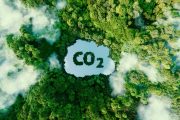
The earth moved in Japan, and thousands of people were buried in rubble or washed out to sea. Hundreds of thousands are homeless, and suffering from thirst, hunger, and cold. Lacking reliable electricity, much of industry is shut down even if undamaged.
We don’t know the total death toll as yet, but so far the score is earthquake and tsunami around 10,000; nuclear energy, 0. But the damaged nuclear reactors are nonetheless at the top of the news.
The tsunami affected the other side of the Pacific too; some Americans lost their lives, or had to be rescued by the Coast Guard. The biggest fear, however, is not the tidal wave, but the prospect that demon radiation will cross the Pacific and rain down death. Potassium iodide tablets are selling out. Anti-nuclear activists call for shutting down nuclear energy.
I wouldn’t criticize people for buying potassium iodide; I already have some. If you ever really need it, you probably won’t be able to get it. Don’t assume that our government has stockpiled KI or other essentials.
There are a lot of other things that the Japanese need more right now, such as bottled water and food. You do have some of that stored away, don’t you?
Another need is for radiation-monitoring instruments. More than 1,000 RadStickers, postage-stamp sized detectors that instantly measure dangerous levels of radiation, have been sent to Japan as a gift by an American scientist.
One of my personal projects is to help distribute RadStickers to American firefighters and police officers so they will have them in the event of a real nuclear disaster, such as detonation of a terrorist (or North Korean) nuclear bomb. I have a RadSticker on my credit card, and also carry a credit-card-sized SIRAD (self-indicating instant radiation alert dosimeter; for more information, click here.) In addition, I have a NukAlert, which is a dose-rate meter that chirps like a bird if it detects dose rates greater than 0.1 rad/hr.
My SIRAD is showing a dose of between 2 and 5 rads because I usually forget to take it out of my carry-on luggage before it goes through the x-ray machine. It has made about 20 trips through there by now. It makes me wonder how much the TSA agent gets from standing by the machine all day. It is shielded, of course, but how effectively? I don’t see any of those lead aprons that x-ray technicians wear. If I worked for TSA, I’d have a SIRAD in my pocket. Agents used to be issued dosimeters.
The main purpose of RadStickers is to prevent panic. They are not very sensitive, so they are not going to pick up background radiation, or the excess radiation from a load of bananas or pottery. The lowest reading is 25 rads. An acute dose of less than 100 rads probably wouldn’t make you sick. A dose between 300 and 400 rads causes acute radiation sickness and a 50 percent chance of death. There’s a widespread belief that the teeniest dose might increase your risk of getting cancer in 20 years, say adding 1 percent to the 25-percent risk you have anyway, but there is also much evidence that low doses are actually protective.
For perspective, here are some numbers. At the gate of one Japanese plant during a fire, the dose-rate was temporarily as high as 11,000 microsieverts/hr, quickly dropping back to 600 microsieverts/hr. The level at the edge of the evacuation zone was 300 microsieverts/hr. In the older radiation-protection units, that’s from 1.1 rem/hr down to 0.03 rem/hr. The dose from one chest x-ray is about 0.01 rem and from a full-body spiral CT scan up to 10 rem. (In this context 1 rem is about the same as 1 rad.) If you stood at the gate of the plant for 10 hours at the highest dose-rate, you’d get as much radiation as from the total-body CT scan.
Irresponsible terror-mongers have been distributing material on the internet predicting an instantly lethal dose of 750 rads hitting western and intermountain North America within 10 days. This is preposterous.
Senator Lieberman is calling for a moratorium on U.S. nuclear power plants. Actually, we have had the near equivalent ever since Three Mile Island killed nobody, with a loss of some $10 trillion to our economy. China and India are not considering any such nonsense.
From the horror in Japan we should at least try to learn something. There are radiation threats in the world — the ones significant to the general population are from nuclear weapons. (Nuclear power plants absolutely cannot produce a nuclear explosion, though there have been explosions of hydrogen gas.) Americans have very little knowledge and less preparedness, and are thus highly vulnerable to merchants of fear.
You don’t need to believe anything I say or what anyone else says about your radiation exposure. You can measure it for yourself with an instrument you can make from materials you probably have around the house. There were rudimentary instructions in Parade magazine in the 1950s. Good, field-tested instructions can be downloaded free from the Internet. Thousands of schoolchildren have successfully made a Kearny fallout meter. So can you.
Let us do what we can to help people in Japan. Let us also improve our own knowledge of radiation and ability to survive catastrophes that are much more likely than a tsunami hitting the nuclear generating station near Phoenix.
Photo: Jane M. Orient, M.D.
Jane M. Orient, M.D., is executive director of the Association of American Physicians and Surgeons and president of Doctors for Disaster Preparedness. She has an active practice in Internal Medicine in Tucson.



